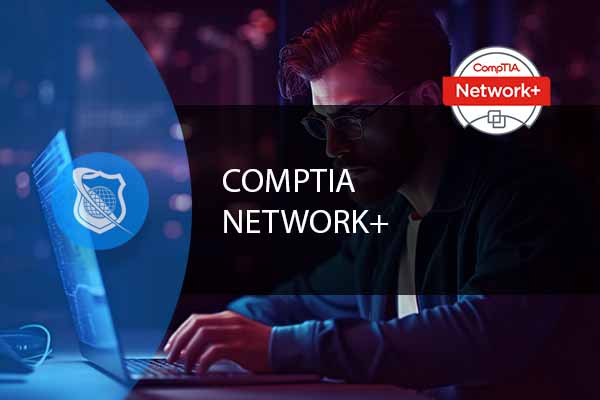What Is 3D Printing?
3D printing, also known as additive manufacturing, refers to a process of creating three-dimensional solid objects from a digital file. The creation of a 3D printed object is achieved using

The world of IT is ever-changing, and staying ahead requires continuous learning and certification. One such essential qualification is the CompTIA Linux+ certification. As part of the CompTIA Linux+ Guide to Linux Certification, this credential validates the essential skills and knowledge needed to manage and operate Linux systems. With over 20 years of experience in the field, I’ve seen firsthand how this certification can open doors and elevate careers. In this comprehensive guide, I’ll share insights, strategies, and tips to help you prepare and succeed in achieving this valuable certification.
The CompTIA Linux+ Guide to Linux Certification is more than just a title; it’s a symbol of proficiency, a mark of excellence, and a pathway to demonstrating your expertise in one of the most versatile and widely-used operating systems in the world.
Linux is not just an operating system; it’s a philosophy and a community. It represents the spirit of collaboration, innovation, and freedom that drives the open-source movement. The CompTIA Linux+ certification is a testament to your understanding of this philosophy. It shows that you have mastered the core principles, tools, and practices that make Linux unique.
Linux is at the heart of many enterprise systems, from web servers to cloud infrastructure. It powers some of the world’s most complex and critical applications. Having a certification that validates your ability to manage, configure, and troubleshoot Linux environments sets you apart as an expert in the field. It’s a mark of excellence that employers recognize and value.
Unlock the power of Linux with our comprehensive online course! Learn to configure, manage, and troubleshoot Linux environments using security best practices and automation. Master critical skills for the CompTIA Linux+ certification exam. Your pathway to success starts here!
In a competitive job market, the CompTIA Linux+ certification can be the edge you need. It’s not just about technical skills; it’s about problem-solving, analytical thinking, and a deep understanding of how Linux fits into the broader IT landscape. This certification opens doors to specialized roles in system administration, network management, and cybersecurity.
The certification process is rigorous and comprehensive, covering everything from basic commands to advanced system architecture. It ensures that you have the hands-on experience and theoretical knowledge required to excel in various Linux-related roles. This validation is essential for both employers and employees, creating a standard of quality and competence that benefits the entire industry.
Linux is ever-evolving, with new distributions, tools, and technologies emerging regularly. The CompTIA Linux+ certification is not just a one-time achievement; it’s a commitment to continuous learning and growth. It encourages you to stay engaged with the Linux community, keep up with the latest trends, and continuously hone your skills.
The CompTIA Linux+ exam is divided into two parts: XK0-004 and XK0-005. Both exams test your understanding of various Linux concepts, including:
Each exam consists of multiple-choice questions, performance-based items, and fill-in-the-blank questions. You’ll have 90 minutes to complete each exam, with a passing score of 720 for XK0-004 and 730 for XK0-005 on a scale of 100-900.
The CompTIA Linux+ certification is suitable for IT professionals who want to specialize in Linux administration, system engineers, network administrators, and those looking to enhance their career prospects in the open-source community.
While there are no formal prerequisites, it’s recommended to have at least 9-12 months of hands-on experience with Linux systems or have completed the CompTIA A+ and Network+ certifications.

In partnership with Udemy and Vision Training Systems, get the newest A+ training course at the best price
The updated 220-1201 & 220-1202 exams deliver cutting-edge skills for today’s tech-driven world—covering essential hardware, software, networking, and security knowledge.

Learn concrete vendor neutral Network fundamentals in our comprehensive CompTIA Network+ traning course.
Preparing for the CompTIA Linux+ exams requires a combination of theoretical knowledge and practical skills. Here’s a list of resources that I’ve found valuable over my 20 years in the field:
A well-structured study plan is crucial for success. Here’s a suggested approach:
The CompTIA Linux+ exams cover a wide range of topics. Here’s a closer look at some key areas you’ll need to master:
ls, grep, awk, and sed./etc, /var, and /usr.Unlock the power of Linux with our comprehensive online course! Learn to configure, manage, and troubleshoot Linux environments using security best practices and automation. Master critical skills for the CompTIA Linux+ certification exam. Your pathway to success starts here!
The CompTIA Linux+ Guide to Linux Certification is a valuable asset for any IT professional looking to specialize in Linux. With diligent preparation, practical experience, and the insights shared in this guide, you’re well on your way to success. Remember, the journey to certification is not just about passing an exam; it’s about building a skill set that will serve you throughout your career. Embrace the challenge, and happy learning!
The CompTIA Linux+ Guide to Linux Certification is a professional certification that validates an individual’s skills and knowledge in managing and operating Linux systems. It’s important because it demonstrates expertise in one of the most widely-used operating systems in the world, providing a competitive edge in the job market.
IT professionals, system administrators, network engineers, and anyone interested in specializing in Linux should consider pursuing the CompTIA Linux+ Guide to Linux Certification. While there are no formal prerequisites, having 9-12 months of hands-on experience with Linux or completing CompTIA A+ and Network+ certifications is recommended.
Preparing for the CompTIA Linux+ Guide to Linux Certification exams requires a combination of theoretical study and practical experience. Utilizing official CompTIA study guides, online training platforms, practice exams, and hands-on practice with Linux environments are essential steps in the preparation process.
The CompTIA Linux+ Guide to Linux Certification exams cover a wide range of topics, including Linux system architecture, GNU and Unix commands, security, networking, devices, filesystems, and the filesystem hierarchy standard. Mastery of these areas is essential for success in the exams.
The CompTIA Linux+ Guide to Linux Certification is a recognized credential in the IT industry. It can open doors to specialized roles, increase earning potential, and demonstrate your commitment to professional development. Employers value this certification as a mark of excellence and proficiency in Linux systems.
Unlock the power of Linux with our comprehensive online course! Learn to configure, manage, and troubleshoot Linux environments using security best practices and automation. Master critical skills for the CompTIA Linux+ certification exam. Your pathway to success starts here!
You may also like:
Preparing for the CompTIA Linux+ Exam Questions
Unpacking the CompTIA Linux+ Exam Objectives for Success
CompTIA Linux+ Exam Questions: Understanding the Key Concepts
In participation with our Udemy Partner, enroll in the newest CompTIA A+ 2025 training course for only $12.99
Lorem ipsum dolor sit amet, consectetur adipiscing elit. Ut elit tellus, luctus nec ullamcorper mattis, pulvinar dapibus leo.
$49.99 Original price was: $49.99.$24.99Current price is: $24.99. / month with a 10-day free trial
3D printing, also known as additive manufacturing, refers to a process of creating three-dimensional solid objects from a digital file. The creation of a 3D printed object is achieved using
Access Management refers to the processes and technologies designed to control and manage access to information and systems within an organization. It plays a critical role in ensuring that the
An Ad Hoc Network is a decentralized wireless networking paradigm that allows individual devices to communicate directly with each other without relying on a pre-existing infrastructure, such as routers or
Adaptive User Interfaces (AUIs) are intelligent systems designed to improve user interaction with software applications by automatically adjusting their layout and elements based on the user’s needs, preferences, and context.
Adobe Photoshop is a powerful digital imaging and graphics editing software developed by Adobe Inc. It’s widely recognized as the industry standard for raster graphics editing, used by professionals in
Agile Business Analysis (ABA) is a methodological approach that focuses on delivering business value by integrating business analysis processes with agile principles. It emphasizes flexibility, continuous improvement, and close collaboration
Agile Project Portfolio Management (PPM) is an approach that aligns project, program, and portfolio management practices with agile methodologies. It focuses on flexibility, continuous improvement, and the ability to adapt
Agile Test Automation refers to the practice of automating the testing process in an agile software development environment. It aims to enhance the efficiency and effectiveness of testing by automating
AI Governance is a framework or system designed to ensure the responsible development, deployment, and use of artificial intelligence (AI) technologies. It encompasses a broad set of policies, principles, and
Algorithmic bias refers to systematic and repeatable errors in a computer system that create unfair outcomes, such as privileging one arbitrary group of users over others. This bias can originate
Amazon Web Services (AWS) is a comprehensive, evolving cloud computing platform provided by Amazon that includes a mixture of infrastructure as a service (IaaS), platform as a service (PaaS), and
Continuous Data Protection (CDP), also known as real-time data protection, refers to the method of backing up data by automatically saving a copy of every change made to that data,